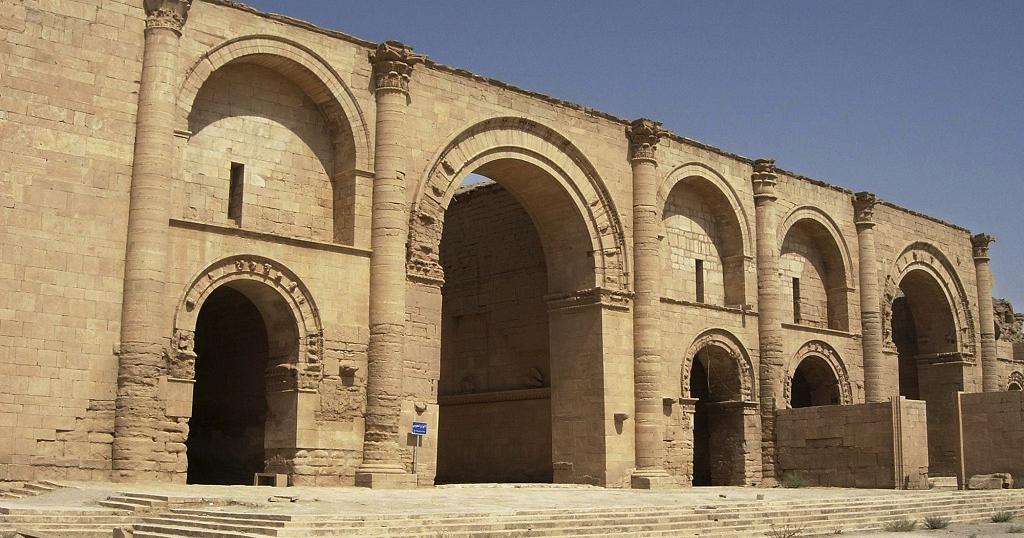202
Hatra was once the capital of the small Kingdom on Araba and one of the first Arabic states to be established out of Arabia. It is found in the al Jazeera region in the west of Nineveh governorate in Iraq, some 290 km (180 miles) northwest of Baghdad and 110 km (68 miles) southwest of the city of Mosul, a major trading crossroads between the Roman and Persian empires.
Ancient people once walked between the stone columns of this city famously called the City of Sun because of it’s symmetrical halls which look to the east where the sun rises.
But Hatra has survived several invasions including two by the Romans before it was finally abandoned, but the Islamic State group left much harder scars to remove.
When the militants took control of the area, they destroyed most of the statues. IS or Daesh as the group was known locally, used the city as a military camp and a workshop for preparing car bombs and suicide belts.
They allowed no-one to enter the city during their control of the area. They shot many of the statues and sculptures on walls, and there are bullet holes on many of the statues and walls inside the ancient city.
It would later be liberated from IS in 2017, but the damage they caused can still be seen.
Time and gravity had caused the collapse of some of the city’s archways, even before the Islamic State militants took control of the area.
Now an international group of archaeologists have begun to return parts of the city to its glorious past.
This celebration marks the completion of the first stage of the work which is supervised by the Mosul Archaeology Department and the Iraqi Ministry of Culture, Tourism, and Antiquities.
Director, Mosul Antiquities Inspectorate Khairuddin Ahmad explains the work began just in time to save some of the artworks.
He says: “Today there was a celebration for the end of first stage of reparation and restoration works on the ancient site of Hatra. These works were focused on administrating the site in addition to urgent maintenance to save some statues and pieces, as well as some walls, and some sculptures were put back in their original places.”
The restoration of the Hatra ancient site is being undertaken by the Italian International Association for Mediterranean and Oriental Studies (ISMEO) and funded by the International Alliance For the Protection of Heritage in Conflict Area’s (ALIPH).
Professor Massimo Vidale, an archaeologist from the University of Padova is part of the restoration team.
He says: “The site was encumbered by a lot, a lot of rubbish, a lot of residues. So, all of these we cleaned away. The surface had to be freed from all these materials. The temples were also cleaned, and then we started working on the architecture. We started working on the statues. Piecing together important sculptures which were damaged by the terrorists. At the same time, we fixed the buildings because if you have no buildings, you cannot work there.”
Mahmoud Abdullah, head of Hatra ancient site explains how the sculptures were damaged.
“Regarding the city of Hatra, we don’t have pieces that can be taken away, I mean transportable pieces in the ancient city. But there are sculptures on the frontside of the temples and some decorate the walls, and these sculptures were exposed to acts of vandalism, to bullet fire or by bashing by the Daesh organization. But as taken away (stolen) antiquities, we don’t have any antiquities that can be taken away by Daesh,” he says.
Like two millennia ago people are once again walking through this city and admiring its towering columns.


